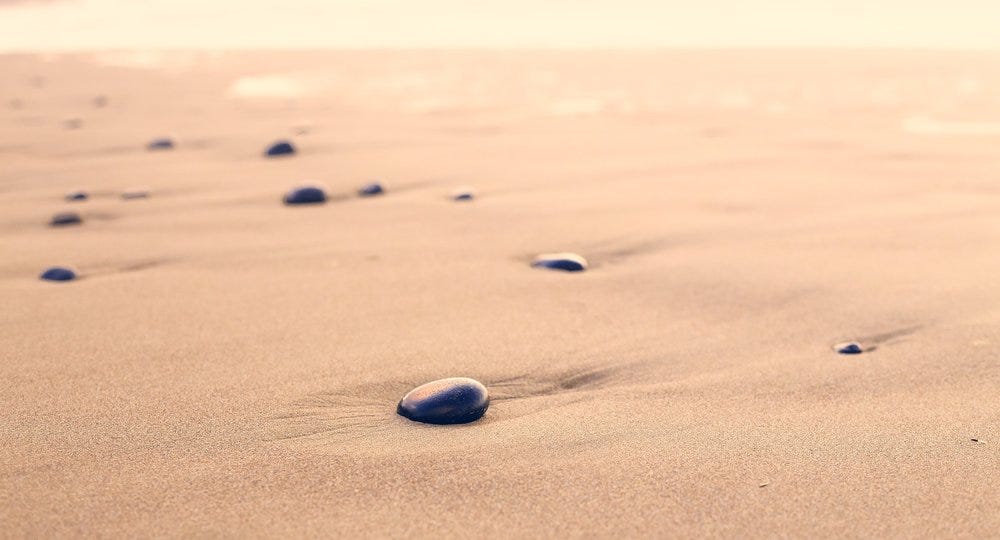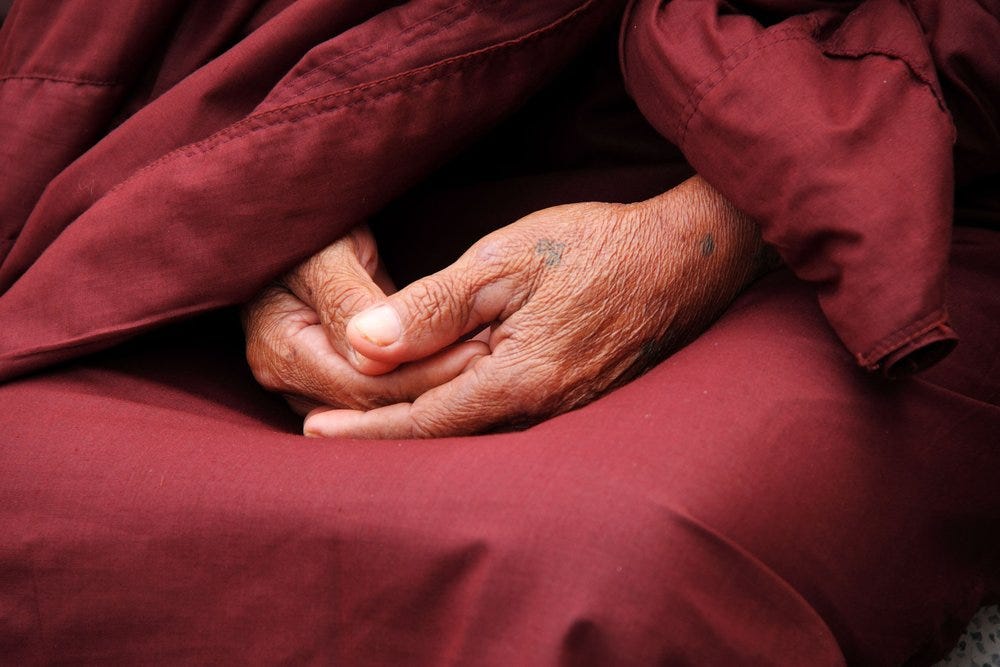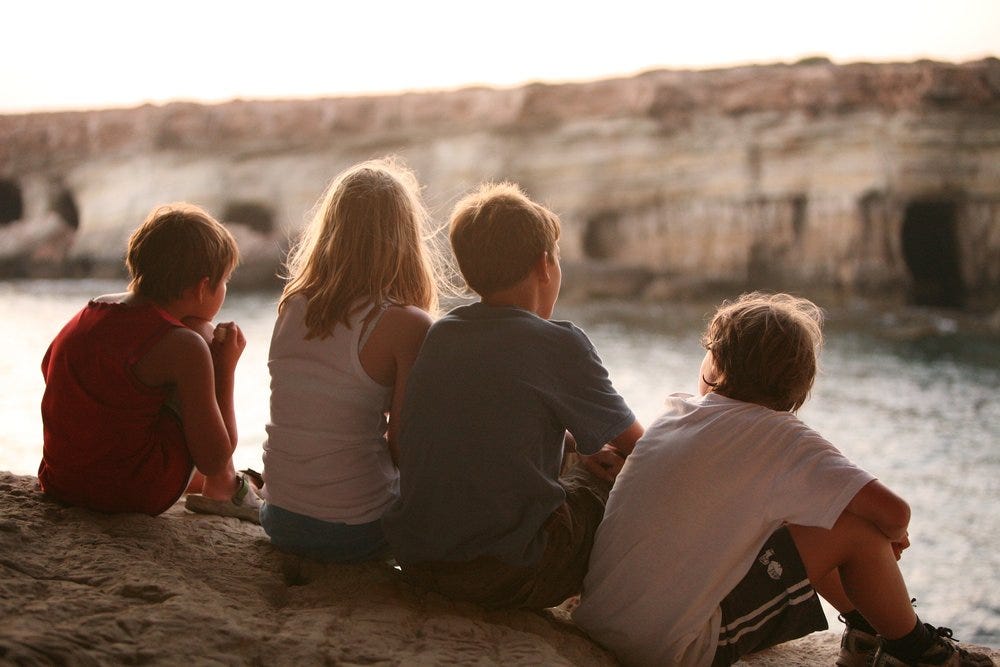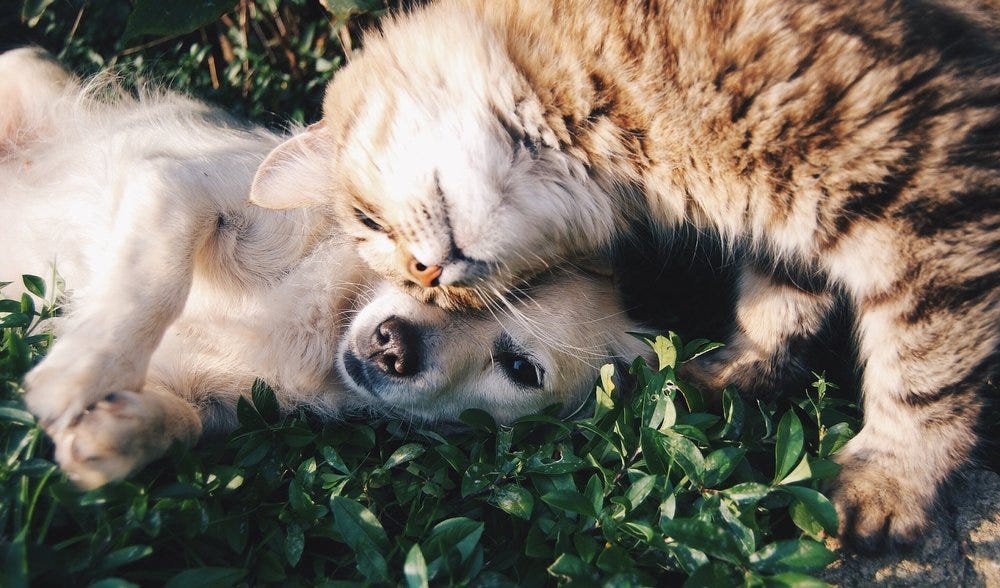Chaos, Coherence, Resonance, Harmony
Pt 2: How these words shape meaning, culture, energetics, and every day life.
Last Sunday, I held a workshop called Syntropy Sequence, sharing a process that I have found invaluable over the last 6 years in navigating experiences of chaos. This sequence helps me regenerate my personal power, and has resulted in experiences of profound grace, leading to many of the relationships and collaborations that have shaped my life into one of deep meaning and service.
What follows is some of the core material I presented in my workshop. In my previous essay, I introduced this sequence and invited you to reflect on your own relationship with these words, these concepts. Here, I will go into some of their etymology, and then deeper into the way I perceive them culturally, energetically, and in every day life.
To read the essay that precedes this piece, go here.
To read the essay that introduces the idea of Syntropy, go here.
The first and most important thing to know about chaos, is that chaos always has a pattern. We call it chaos when our minds have not yet recognized the pattern, so we don’t yet know how to respond. Befriending chaos and training our minds to be more capable of pattern recognition is 100% in your grasp and is a necessary skill for navigating humanity’s uncertain future.
Chaos Essentials
Chaos is the state in which reality can regenerate itself through shifting patterns and metabolizing what came before.
Origins
The oldest source of the word chaos can be traced back to Hesiod, an ancient Greek pre-Socratic poet who used the word (χάος) to describe the vast, open, empty potentiality of space before creation.
Every origin myth of the creation of this world begins with a description of a vast open dark and watery void which was at once pure emptiness and pure potential.
Although the meaning of the word in our daily use does not often consciously represent this primordial emptiness, the ancient meaning and truth of this word is present in our contemporary use of the word chaos as it is the cosmic fertile space of infinite possibility which underlies all of our experiential reality.
Chaos in Our Culture
Our modern use of the word now describes disorder, crowdedness, uncertainty, and confusion. This came from Ovid, and then later Elizabethan literature which used the word as an exaggeration to describe pandemonium.
In the 60’s and 70’s two additional meanings of the word began to take hold as Chaos Theory emerged as a field of mathematics and scientific discovery, and Chaos Magick emerged as a form of esoteric ritual practices.
Chaos Theory (rational) and Chaos Magick (gnostic/intuitive) emerged at a time when the insights of Living Systems Theory were beginning to spread through cultural and scientific subgroups, allowing new insights and possibilities to be considered even and particularly because of the newly articulated possibilities of systems change.
The Energetics of Chaos
Chaos is pure evolutionary potential, the uncertain space in which infinite possibilities lie in wait.
Chaos is the state from which magic and miracles unfold.
It’s the overwhelming flood of neurochemicals when we fall in love and suddenly the world is more beautiful.
It’s rain breaking down mountains and flowing as rivers to distribute all the minerals and nutrients of the earth to the rest of life in the low lying places.
It’s the grief at the loss of a loved one, and the wide open possibility of a life lived with new purpose.
Chaos is the state of a system that is collapsing, which emerges just before life makes a choice to regenerate.
Everyday Chaos
We all know what this is and what it feels like.
To be overwhelmed in a crowd.
To be frustrated and confused in diverted traffic.
To show up at an event that turns out to be completely disorganized and unplanned.
Taking care of children who have so much energy and so many needs and don’t know how to express either, leading to screaming and throwing and crying and messes.
Birth, death, moving, creating, falling in love, all of these are common, necessary, inevitable chaotic moments in which our choices and the way we respond to life matters so much. Chaos is where our choices matter the most.
Chaos is the state in which our lives are shaped.
Coherence Essentials
Coherence is the experience of reality coming into a stable state through active presence, listening, and courageously being with what is.
Origins
Coherence comes from the latin cohaerere "to cleave together." It refers to the internal consistency of an argument, the ability of different objects to stick together, the aesthetic and/or logical order of a thing.
In physics, coherence describes waves having the same direction, wavelength and phase, as light in a laser.
In botany, coherence describes attaching or pressing against an organ of the same nature. In being with chaos, coming to a state of coherence calls on all of these meanings. Coherence is being with what is. Finding internal consistency through stillness and silence, being fully present with whatever is unfolding around us.
Coherence in Our Culture
We live in a culture in which rugged individualism and making ourselves loud and distinct is considered not only a value, but a necessary personality trait to survive in our competitive economy.
Qualities of deep listening, deep presence, and internal consistency (integrity) are often considered soft or feminine traits, and therefore degraded.
Consider Donald Trump’s speeches and tweets, perhaps the most incoherent example of human communication since the emergence of language, and he is considered by many to be the savior of civilization.
The president of a nation reflects the heart of a nation, and it seems to me that becoming coherent is one of the most significant internal processes that we can do to see ourselves out of this mess.
The Energetics of Coherence
When I think about the word coherence outside of the technical etymology, what comes to me is a breakdown of the word into two parts: co, as in mutual, collective, more than two. and here, as in this present space, and also as in hear, to listen.
Presence, listening, and mutuality are the core elements of coherence. This is of course a huge challenge when we find ourselves in chaos fields, which is when coming to coherence is more important than ever.
Coherence must begin within ourselves, and can be found through simple practices like breathing, releasing thoughts and fears, and noticing the world around us.
When we come into coherence, the coherent field that we create has the chance to radiate through the world around us, which makes the rest of the chaos response process possible.
Everyday Coherence
Coherence is a quality of internal consistency that can only come to us through conscious cultivation. For guidance here, we can turn to practices that come to us from our ancestors and elders. Whatever your heritage, whether you have a spiritual path or not, you come from ancestry which has a rich history of sacred practices for presence, healing, deep listening, and mindfulness.
In every culture, they are known differently, and in our modern culture some systems are more known and accessible than others. The journaling process below will help you to find what is most authentic and congruent for you.
Resonance Essentials
Resonance is the state in which a possibility becomes more potentiated through synchronous vibration with a neighboring possibility.
Origins
Resonance is first and foremost a word that belongs to the world of sound.
Resonance describes the depth and length of a sound which is shaped by how it interacts with the matter around it.
Sympathetic resonance is the quality that we are aiming for in our responses to Chaos. Sympathetic resonance occurs when one object creates a sound, and one or more objects around it begin to vibrate at the same frequency, increasing the volume and depth of the sound. This is reflective of the felt experience of hearing and understanding others, and feeling heard and understood ourselves.
Resonance in Our Culture
One of the most commonly felt experiences of resonance comes from teamwork. When we all understand and believe in the collective goal shared by a team, the effectiveness of the teamwork can be exponentially more powerful than a team which fails to connect in this way.
The recent cultural fascination with flow states is a strong indication that we are recognizing the value and possibilities held within this collective space of shared vision and creative problem solving.
In our current cultural state of so many possibilities and perils coming together at once, it’s more important than ever that we learn how to get into this connected and focused state of being with one another, with a clear and collective vision of the world that we want to create.
The Energetics of Resonance
An important facet of resonance is joy shared with others. Buddhism has a specific term for this, mudita, which is commonly translated as sympathetic joy.
Sympathetic joy is one of the most personally empowering traits we can cultivate because it dispells all feelings of jealousy, inadequacy, or shame. When we feel joy because we witness or participate in another’s joy, we expand our sense of what is possible for us. This is the space where miracles begin to unfold.
This is the space where friendship is made.
Everyday Resonance
We can cultivate resonance every day by committing to real and deep connection with the other life forms around us.
Family, pets, coworkers, neighbors, people on our social media feeds. These are all living beings who crave a depth of contact which so many of us are starved of in this world.
Resonance emerges due to proximity and depth of frequency. Start where you are, with the people around you daily. Have deeper conversations, ask meaningful questions, listen to them closely. Commit to understanding the people around you more and more, and you will find yourself naturally developing a deeper resonance.
If you begin this practice and realize that you are surrounded by people you don’t want to be connecting with in depth, take steps to seek out the people who live and love the way you want to live and love. You may discover that as you transform, the people around you transform as well.
Harmony Essentials
Harmony is the convening of distinct realities sharing space and time, arranged in such a way that creates beauty from difference.
Origins
Harmony describes a pleasing or beautiful arrangement of elements, such as sounds. It describes a state in which there are necessarily elements that are different, diverse from one another.
The word derives from the latin harmonia meaning ‘union, agreement, joining, concord,‘ and dates back as far as Pythagoras.
Harmony is used to describe not only music, but all possible combinations of unique elements which, joined together, create pleasure or beauty.
It is a term which refers specifically to relationships: relationships between notes or musicians, between colors, between species, or between nations.
Harmony in Our Culture
Harmony in our culture can be experienced, quite literally, when people gather to make music together. Any kind of cultural sharing, in which many different people are able to appreciate, honor, and flow between a range of cultural expressions is human harmony at its most beautiful.
There are infinite beautiful ways that cultural harmony can occur. When we are all giving our gifts, bringing who we truly are, to the service of the collective, everything flows.
The Energetics of Harmony
Harmony is flowing with others. It is the art of attuning ourselves to the rhythms and capacities of those around us, creating balance between our own needs and those of the collective.
Energetically, harmony invites us to soften our edges and embrace collaboration. It’s not about erasing conflict but transforming it into an opportunity for creativity and growth. Harmony requires humility—knowing where our gifts and capacities end and another’s begin—and courage to participate fully in the symphony of life.
Harmony is also a felt sense of connection: the resonance we feel when our actions, values, and relationships align with the greater whole.
Everyday Harmony
Cultivating harmony begins with how we approach the relationships and systems in our daily lives. Here are practical ways to foster harmony:
Listening Deeply: Create space for others to express themselves fully, without judgment or interruption. Listen not just to their words but to the emotions and intentions beneath them.
Embracing Differences: Seek to understand rather than fix or oppose. Whether it’s a coworker’s perspective or a family member’s habits, approach differences with curiosity and openness.
Balancing Boundaries and Connection: Harmony isn’t about losing yourself in others; it’s about finding the sweet spot where your unique essence contributes to the greater good. Honor your boundaries while inviting connection.
Practicing Reciprocity: In relationships, aim for a balance of giving and receiving. Notice where you might take more than you give, or give without allowing yourself to receive in return.
Creating Together: Collaborate on something that brings joy, whether it’s cooking a meal, making art, or solving a problem. Co-creation fosters a tangible sense of harmony.
Mindful Presence: Bring your full attention to the present moment. Harmony is often found when we are fully here, attuned to the subtle interconnections around us.
Harmony, over time, will again give rise to chaos. This is inevitable, and always a gift that brings us toward a new regenerative experience. Fortunately, we now know how to respond to chaos as soon as we notice it- we drop into the stillness of coherence, and prepare ourselves to feel a new resonance with the world around us. From there, we step into action which harmonizes with the world around us, and we move through the cycle once again.
What helps us cultivate these ways of being? A community of practice.
This winter, I will be hosting The Art of Regenerative Living, an intimate winter council for no more than 12 people who are looking for a space of depth, connection, and embodiment as we move through times of chaos and emergence.
This council is designed for collective wisdom (which the world needs now more than ever). We begin on December 22. Registration closes on December 18 or when all 12 seats are filled.













